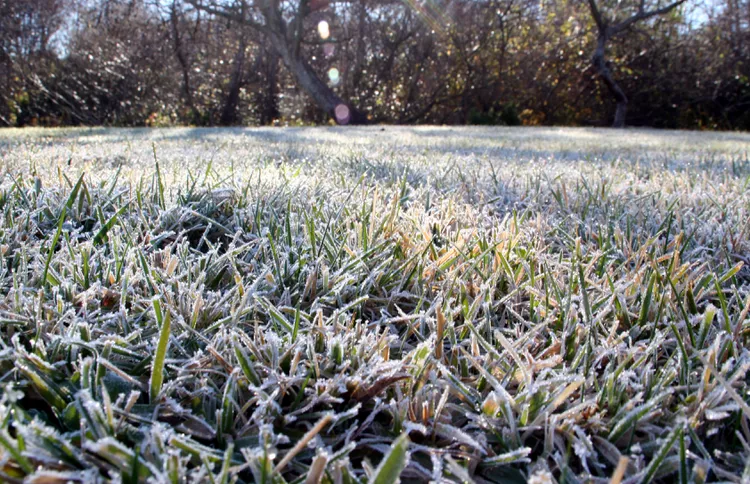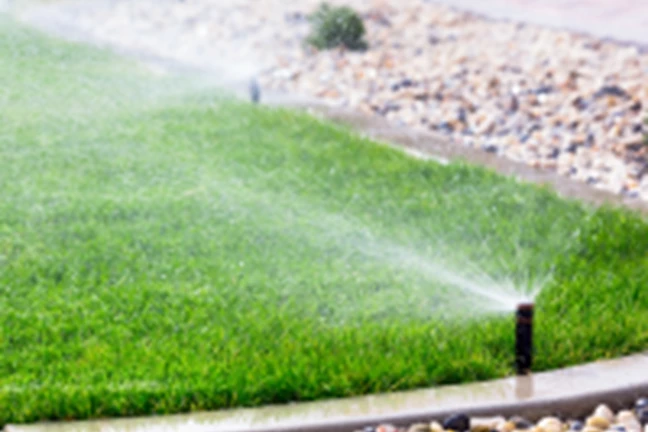Tips for Protecting Your Lawn from Winter Damage
Last Updated on September 23, 2025 by Duncan
Winter is the time of year when your lawn, becomes dormant. When plants are dormant, they are more resistant to harsh weather and can survive till spring. However, this does not mean the grass is completely unaffected.
Ice and snow can still affect your environment. Understanding the effects of snow on your grass might help you prepare for potential damage next spring and avoid unpleasant surprises.
Scientific Plant Service’s professionals can assist you in providing the necessary care for your grass throughout the colder months. They will help you plan for the potential effects of snow on your lawn.
How does winter harm your grass?
Winter cold will hurt your grass in a variety of ways that include:
Grass blades freeze
Temperature fluctuations are difficult on both people and plants. The cold dehydrates the grass, making it weaker overall. This debilitated status worsens when temps drop below freezing. At that moment, grass blades may snap.
This is why lawn experts advise against walking on frozen or frosted grass to prevent cracking and breaking. If grass leaves are damaged and jagged, they are more prone to illness and death.
Mold growth
Snow mold, a cold weather fungus, is one of the most damaging impacts of snow on your lawn. When your grass is covered with snow, you can’t see what’s going on beneath it.
After the snow melts, you might notice white or pink streaks on your lawn. These are areas with snow mold. Fortunately, you can treat your lawn to avoid snow mold. Contact your Scientific Plant Service advisor for a personalized examination and treatment plan.
Damage from the ice cover
Even if your grass is dormant throughout the winter, it is still breathing. Prolonged ice cover limits gas exchange, resulting in a hazardous environment.
Low sections of your lawn that collect water may ice over if temperatures remain below freezing for more than a week or two. There is a risk of permanent injury. Making small vents through the ice with a shovel or pick can help in gas exchange.
Damage from rock salt
One of the negative side effects of snow on your lawn is the use of rock salt to reduce snow and ice on adjacent highways. Salt affects your lawn’s roots by removing moisture from them. If possible, apply sand or ashes on your walkways and driveway.
If salt is required, apply it from the center outward, avoiding the perimeter of your lawn and garden.
Ice suffocation
A thick covering of ice might kill your grass. This is because the covering functions as a suffocating covering, preventing the grass from receiving the oxygen it requires to thrive. Ice crystals can potentially injure and kill grass blades.
Winter burn
Winter burn occurs when cold, dry winds remove moisture from the grass blades quicker than the frozen ground can replace it, causing the grass to turn brown and die.
Vole damage
To protect themselves, these little rodents construct tunnels under the snow. As they go, they gnaw on grass stems and blades, creating a network of distinct paths that become evident as the snow melts.
How do you protect your lawn from winter damage?
There are a number of ways you can protect your lawn from winter damage. These ways include:
Properly prepare your lawn for winter
The best defense against winter damage is a solid foundation. Giving your grass a little attention in the fall prepares it for success and makes it far more adaptable to future problems. Some of the things you should do include:
Aerate the soil: Aerating your lawn in the fall helps to alleviate soil compaction produced by summer traffic. By making small holes in the soil, you allow important oxygen, water, and nutrients to reach the roots, resulting in a healthier lawn.
Mow at the right height: A final trim of 2 to 2.5 inches in the fall keeps the grass from matting down under the snow, which is a major cause of snow mold.
Fertilize with a winterizer: Using a fall-specific fertilizer provides your lawn with nutrients it requires to conserve energy. This process strengthens the roots of your grass, making it more resistant to winter desiccation when the ground freezes.
Remove all debris: Rake up all the leaves, grass clippings, and other organic stuff from your lawn. Leaving this waste left collects moisture, which can promote fungal development and provide a safe haven for voles.
A little prep work in the fall prepares your lawn for winter survival.
Be cautious how you manage the snow piles
When a large snowstorm hits, the challenge isn’t simply how to clean it, but where to put it all. Simply moving snow into enormous, heavy piles on your lawn might result in considerable harm.
Handling snow correctly protects your vegetation without causing further complications. Some of the things you should do include:
Direct snow to the appropriate areas: The weight of huge, heavy snow mounds on your lawn can cause soil compaction and ice suffocation. Instead, move snow to non-grassy areas such as a driveway or a designated staging area.
Select lawn-safe deicers: Traditional rock salt is hazardous to grass and can contaminate the soil, causing ugly areas. To protect the surrounding grass, use de-icing chemicals that have been specially designated as lawn-safe.
Protect high-traffic areas: If you need to apply de-icers, concentrate on walkways and paths. Consider using sand for traction in places near your lawn instead of salt, which is a safer and less destructive option.
With careful planning, you can clear your property while keeping your lawn healthy all seasons.
Be smart when tackling the ice
A heavy layer of ice can be one of winter’s most serious threats to your lawn. Ice can severely kill the grass beneath by blocking oxygen from reaching it. Taking a few precautions, however, can prevent a lethal ice sheet from building and allow your lawn to breathe. Do this to protect your lawn:
Gently break apart ice layers. If a heavy layer of ice accumulates on your lawn, use a shovel or rake to gently break it up into tiny pieces. This permits oxygen to reach the vegetation underneath, preventing ice suffocation.
Minimize fresh ice formation: After a thaw, inspect your lawn for any low locations where water could be gathering. Clearing these areas of standing water can help prevent a new sheet of ice from forming when temperatures fall again.
With a little caution, you may let your lawn breathe and avoid the suffocating that an ice coating can inflict.
Fight the snow mold
As mentioned above, snow mold is one of the most prevalent and aggravating forms of winter grass damage. The mold is a fungus that thrives in cold, wet circumstances. The cool thing is that you can make a number of efforts to make your grass less conducive to it.
Some of the things you can do include:
Control late-season watering: As temperatures fall, avoid overwatering your grass. Excess moisture might provide an ideal habitat for fungus to thrive beneath the snow.
Rake your lawn once it thaws: If your lawn has been blanketed in snow for an extended period of time, it may appear matted down and discolored when the snow melts.
Raking these areas gently loosens the grass and allows it to breathe, which prevents mold from spreading.
Being proactive can drastically lower the danger of this frequent winter lawn disease.
Protect your lawn from compaction
Aside from snow and ice, pressure from foot traffic and heavy machinery can quietly harm your grass, and little pests can take advantage of the shelter snow provides.
A little attention can help safeguard your soil and vegetation from these unseen dangers. Some of the things you should do include:
Limit lawn traffic: Walking on a snow-covered lawn, especially if it is frozen, can harm the grass blades and leave compacted trails that will be apparent in the spring. To protect the lawn, try to stay on clear paths and walks.
Protect the edges with obstacles: To prevent snow accumulation in unwanted areas, consider using small snow fences or other barriers to steer drifting snow away from sensitive parts of your lawn.
Check for vole damage: Keep an eye out for a network of tracks left by voles excavating beneath the snow. The best preventative step is to limit their refuge by keeping your grass debris-free.
If you see evidence of their tunnels, carefully rake the area in the spring to break up the runways.
By paying attention to these aspects, you will keep your soil and grass healthy throughout the winter.
FAQs
Should I remove the snow off my lawn?
A light, fluffy layer of snow is usually not necessary to remove because it can act as an excellent insulator for your lawn. The real problem is heavy, deep, or plowed snow, which causes soil compaction and ice layers.
Will my lawn recover after the snow melts?
Yes, in most situations your lawn will grow back. Grass becomes dormant in the winter and is durable. However, the best way to assure a robust return in the spring is to follow the fall preparation activities provided above.
What should I put on my lawn before the winter?
The best thing to use in the fall is a “winterizer” fertilizer. This sort of fertilizer is high in potassium and helps build your lawn’s root system, providing it the energy it needs to survive the winter and thrive in the spring.
How do you mend a damaged lawn after the snow has melted?
After the snow melts, lightly rake any matted areas to break up compacted grass and improve air circulation. Apply fresh dirt to small, dead patches and overseed the area to promote new growth.


